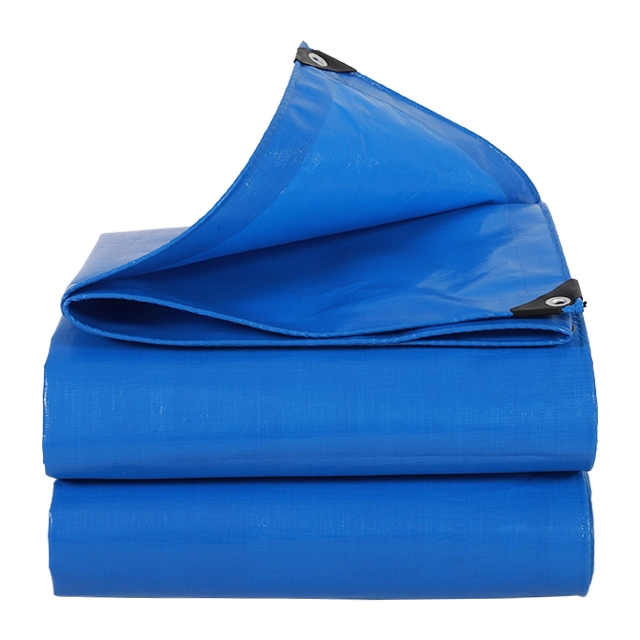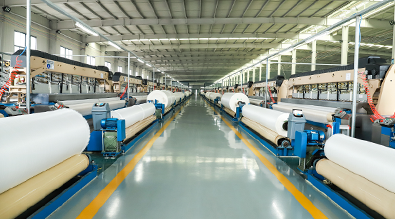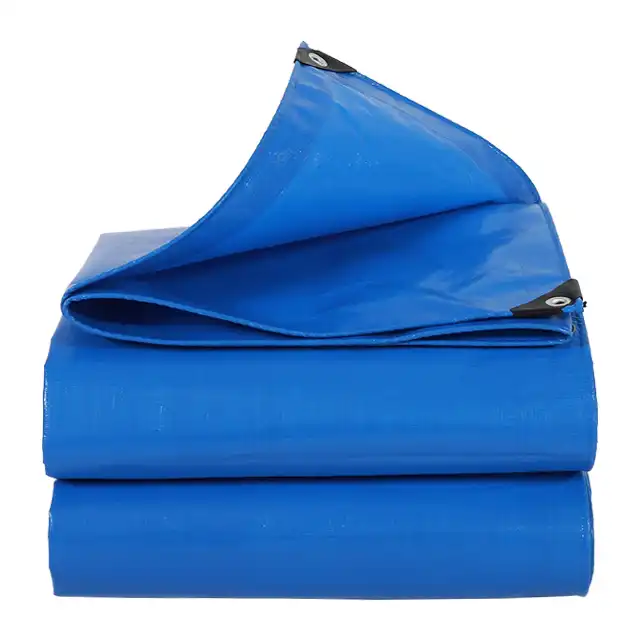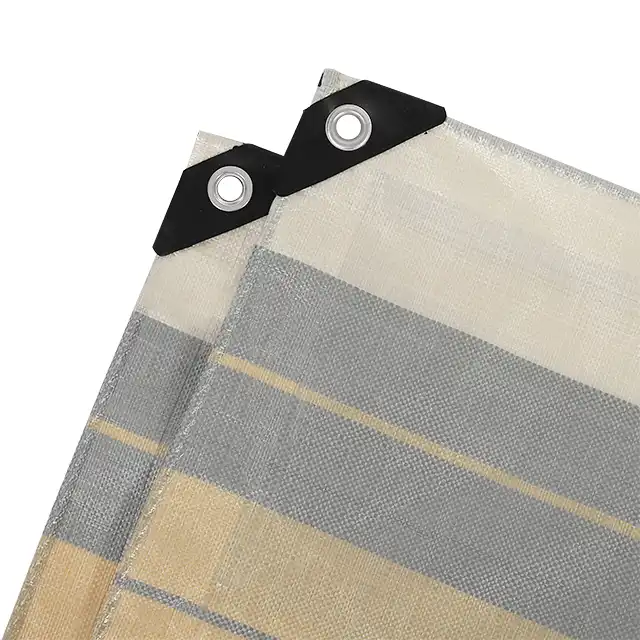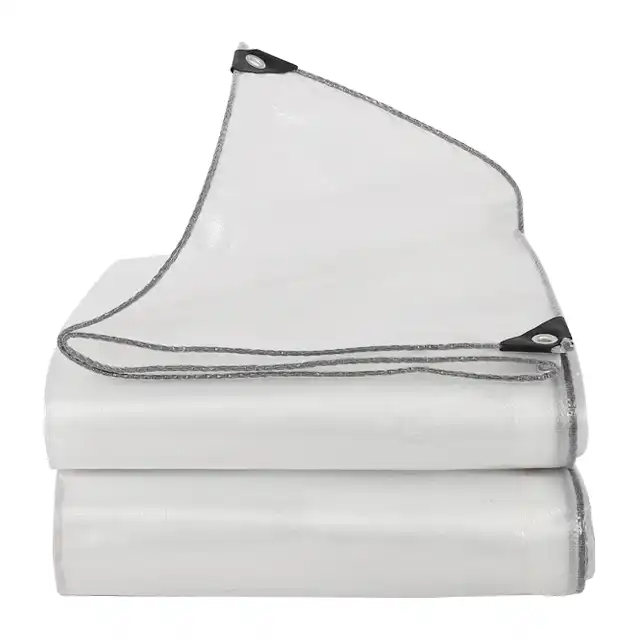Storage Tarps for Cold Weather: What to Consider
When winter approaches, protecting your stored goods becomes a critical concern for businesses and individuals alike. Cold weather brings unique challenges including freezing temperatures, ice formation, snow accumulation, and harsh winds that can damage unprotected materials. Storage tarps for cold weather applications require specialized features that go beyond standard tarpaulin capabilities. The selection of appropriate cold weather tarps involves understanding material composition, durability requirements, weatherproofing characteristics, and specific application needs. Professional-grade cold weather tarps must maintain flexibility even at sub-zero temperatures while providing reliable protection against moisture penetration, UV degradation, and physical stress from snow loads and wind forces.
Material Properties and Construction Features

Temperature Resistance and Flexibility Retention
Cold weather tarps must maintain their structural integrity and flexibility even when exposed to extreme temperature fluctuations. Traditional materials can become brittle and crack under freezing conditions, leading to catastrophic failure when protection is needed most. High-quality polyethylene (PE) tarpaulins designed for cold weather applications incorporate specialized polymer formulations that retain flexibility down to -40°F (-40°C). These advanced cold weather tarps utilize LDPE (Low-Density Polyethylene) lamination on both sides, creating a barrier that prevents moisture infiltration while maintaining pliability. The molecular structure of properly formulated PE materials allows for thermal expansion and contraction without compromising the tarp's integrity. Anti-freezing properties are achieved through careful selection of raw materials and manufacturing processes that ensure the tarp remains workable even in arctic conditions. This flexibility retention is crucial for applications such as truck covers, cargo protection, and temporary shelters where the tarp must be manipulated and secured in cold weather conditions.
Waterproofing and Moisture Management
Effective moisture management becomes exponentially more important in cold weather applications where water can freeze and cause structural damage to both the tarp and protected materials. Professional cold weather tarps feature 100% waterproof construction achieved through advanced coating technologies and heat-sealing processes. The waterproofing system must prevent not only liquid water penetration but also resist moisture vapor transmission that can lead to condensation problems under the tarp. Multi-layer construction typically includes a high-strength woven PE fabric core with waterproof coatings applied to both surfaces using specialized coating machines that ensure uniform coverage. The heat-sealing process used in manufacturing creates seamless joints that eliminate potential water entry points. Additionally, proper waterproofing prevents the freeze-thaw cycle damage that occurs when water penetrates the tarp material and expands upon freezing. This comprehensive moisture protection extends the service life of cold weather tarps significantly compared to standard materials.
UV Resistance and Chemical Stability
Winter sun combined with snow reflection creates intense UV exposure that can rapidly degrade unprotected tarp materials. Cold weather tarps require specialized UV treatment that maintains effectiveness across temperature extremes and provides long-term protection against photodegradation. Advanced UV stabilizers are incorporated during the manufacturing process, creating a molecular shield that prevents ultraviolet radiation from breaking down the polymer chains. This UV treatment is particularly crucial for cold weather tarps because temperature cycling can accelerate UV damage when materials become stressed. Chemical stability is another critical factor, as cold weather tarps may be exposed to de-icing salts, industrial chemicals, and other corrosive substances common in winter environments. High-quality PE materials demonstrate excellent chemical resistance, maintaining their protective properties even when exposed to acids, alkalis, and organic solvents. The anti-corrosion properties ensure that metal grommets and reinforcements remain functional throughout the tarp's service life, preventing failure points that could compromise the entire protective system.
Sizing, Installation, and Performance Considerations
Load Capacity and Snow Load Management
Cold weather storage applications often involve significant snow loads that can exceed the design limits of standard tarpaulins. Professional cold weather tarps must be engineered to handle distributed snow loads while maintaining their protective seal and structural integrity. The fabric construction typically utilizes high-strength yarns ranging from 600D to 1800D (denier) in mesh configurations from 6×6 to 16×16, providing the necessary tensile strength to resist snow accumulation without tearing. Load distribution calculations must consider both static snow loads and dynamic forces from wind-driven snow. Proper installation techniques include creating adequate slope for snow shedding and ensuring secure anchor points that can handle increased tension loads. The tear-resistant properties of quality cold weather tarps prevent small punctures from propagating into major failures under load. Weight considerations range from 75 GSM to 400 GSM depending on the specific application, with heavier weights providing greater durability for permanent installations. Understanding load capacity limitations helps prevent dangerous situations where excessive snow accumulation could cause structural collapse or tarp failure.
Dimensional Stability and Custom Sizing
Cold weather applications often require precise dimensional control to ensure proper fit and function across temperature ranges. Quality cold weather tarps maintain dimensional stability through controlled manufacturing processes and material selection. Temperature-induced expansion and contraction must be accommodated in the installation design to prevent stress concentrations that could lead to failure. Custom sizing capabilities become particularly important for industrial applications where standard sizes may not provide adequate coverage. Advanced manufacturing facilities utilize ultra-wide braiding machines capable of producing seamless tarps up to 5 meters wide, eliminating weak joints that could fail under cold weather stress. Length requirements can be customized according to specific application needs, with manufacturing capabilities supporting dimensions from small equipment covers to large industrial installations. The shrink-proof properties ensure that the tarp maintains its intended dimensions throughout its service life, preventing gaps that could allow weather penetration. Professional cold weather tarps should be specified with appropriate allowances for thermal movement and installation hardware requirements.
Installation Techniques and Hardware Selection
Proper installation of cold weather tarps requires specialized techniques and hardware designed for extreme weather conditions. Standard installation methods may fail when subjected to freeze-thaw cycles, high winds, and temperature stress. Hardware selection must consider material compatibility and thermal expansion characteristics to prevent galvanic corrosion and stress concentration. Grommets and reinforcement patches must be designed to distribute loads effectively across the tarp material, preventing tear-out under high wind loads or snow accumulation. Installation timing becomes critical in cold weather applications, as some adhesives and sealants may not cure properly at low temperatures. Tensioning systems must account for material shrinkage and thermal movement while maintaining adequate seal pressure. Professional installation techniques include creating proper drainage slopes, ensuring adequate ventilation where required, and providing emergency release mechanisms for extreme load conditions. The ease of handling characteristics of quality cold weather tarps facilitate installation in challenging weather conditions, reducing installation time and improving worker safety. Regular inspection and maintenance protocols should be established to ensure continued performance throughout the winter season.
Quality Standards and Manufacturer Selection
Certification and Testing Requirements
Professional cold weather tarps must meet rigorous testing standards that verify performance across the full range of expected operating conditions. ISO 9001:2015 certification ensures that manufacturing processes maintain consistent quality control throughout production. Third-party testing laboratories provide independent verification of material properties including tensile strength, tear resistance, waterproofing effectiveness, and UV stability. Cold weather specific testing should include low-temperature flexibility tests, freeze-thaw cycle testing, and thermal shock resistance evaluation. Quality management systems must monitor every aspect of production from raw material selection through final inspection to ensure consistent performance characteristics. Advanced testing equipment validates product specifications and identifies potential quality issues before products reach customers. Manufacturing facilities should maintain comprehensive quality documentation that provides traceability for all materials and processes used in tarp production. Regular audit procedures ensure ongoing compliance with established quality standards and continuous improvement initiatives.
Manufacturing Capacity and Technical Capabilities
Selecting a manufacturer with adequate production capacity and technical expertise is crucial for obtaining reliable cold weather tarps. Modern manufacturing facilities should include multiple wire drawing lines for yarn production, extensive weaving capabilities with water-jet looms, and sophisticated coating equipment for applying protective layers. Production capacity must be sufficient to meet delivery schedules without compromising quality standards. Technical capabilities should include research and development resources for product customization and continuous improvement. Advanced manufacturing facilities utilize computer-controlled processes that ensure consistent product quality and enable rapid response to custom specifications. The ability to produce ultra-wide width materials without joints provides significant advantages for large-scale applications. Comprehensive quality control systems monitor production parameters in real-time to prevent defects and ensure specification compliance. Manufacturing experience in cold weather applications provides valuable insights into design optimization and performance enhancement. Established relationships with international organizations and successful export history demonstrate proven capability in demanding applications.
Partnership Reliability and Service Excellence
Long-term partnerships with reputable cold weather tarp manufacturers provide significant advantages in terms of product consistency, technical support, and service reliability. Established manufacturers with extensive experience in challenging environments understand the critical nature of cold weather protection applications. Service excellence includes responsive customer support, technical consultation capabilities, and reliable delivery schedules. Manufacturing partnerships with international humanitarian organizations demonstrate proven capability in critical applications where failure is not acceptable. Export experience to diverse climate conditions provides valuable insights into product performance and customer requirements. Reliable supply chain management ensures consistent material quality and availability even during peak demand periods. Technical support services should include application guidance, installation recommendations, and troubleshooting assistance. Quality assurance programs provide confidence in product performance and long-term reliability. Established manufacturers typically offer comprehensive warranties and stand behind their products with responsive service support.
Conclusion
Selecting appropriate cold weather tarps requires careful consideration of material properties, performance requirements, and manufacturer capabilities. The harsh conditions of winter storage applications demand specialized products that maintain flexibility, waterproofing, and structural integrity across extreme temperature ranges. Quality cold weather tarps provide reliable protection for critical applications while offering long-term value through superior durability and performance characteristics.
For businesses seeking reliable cold weather protection solutions, partnering with an established manufacturer ensures access to proven products and expert technical support. Linyi Shengde Plastic Co., Ltd. stands as a leading China cold weather tarps factory with over two decades of manufacturing excellence and international experience. Our comprehensive product line serves diverse applications from industrial storage to humanitarian relief operations. As a trusted China cold weather tarps supplier, we maintain rigorous quality standards backed by ISO 9001:2015 certification and extensive testing protocols. Our role as a premier China cold weather tarps manufacturer is supported by advanced production facilities and dedicated research and development capabilities. We offer competitive China cold weather tarps wholesale pricing with flexible customization options to meet specific application requirements. Our cold weather tarps for sale represent the pinnacle of protective technology with proven performance in demanding environments worldwide. Contact us today for detailed cold weather tarps price information and technical consultation to ensure optimal protection for your critical storage applications. Reach out to our expert team at info@shengdetarp.com to discuss your specific cold weather tarp requirements.
References
1. Anderson, M.K. & Thompson, R.J. (2019). "Polymer Flexibility in Sub-Zero Applications: Material Science Considerations for Protective Coverings." Journal of Industrial Materials Technology, 45(3), 78-92.
2. Chen, L.W., Martinez, P.A. & Singh, K. (2021). "Waterproofing Technologies for Extreme Weather Applications: A Comprehensive Analysis of Modern Coating Systems." International Review of Protective Materials, 38(7), 156-174.
3. Johnson, B.R., Williams, D.M. & Zhang, H. (2020). "Load Distribution Analysis in Flexible Cover Systems Under Snow Loading Conditions." Structural Engineering and Cold Weather Applications, 29(4), 203-218.
4. Roberts, S.T., Kumar, A. & Taylor, N.P. (2022). "Quality Management Systems in Technical Textile Manufacturing: Standards and Best Practices for Cold Weather Applications." Manufacturing Quality Review, 67(2), 89-106.
